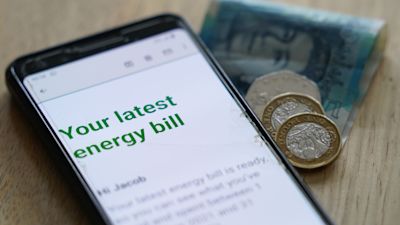England's fuel poor households 'will rise from 4.5m to 6m after April price cap increase'

The government is expected to publish its fuel poverty statistics for England on Thursday and they will probably show that the number of people experiencing fuel poverty is getting lower as it has been for some years now.
But there's a 'but'. In fact there are two.
The first issue will be quite obvious. The statistics coming out on Thursday will only measure the number of fuel poor households in 2020. By the time they come out they will already be more than a year old; and that year has not been kind to people on low incomes.
So the government will also publish a projection of fuel poverty up to and including the April 1 energy price cap rise. National Energy Action (NEA) which monitors fuel poverty already reckons that once the price cap rises there will have been a 50% increase in fuel poverty in the space of just six months.
The second issue NEA has with the government's statistics is one of definition.
The government defines a household as being in fuel poverty if they are in a very energy inefficient home AND are pushed below the poverty line by spending what they need on heating.
But the poverty line is a relative benchmark based on everyone's disposable incomes. If everyone is hit by the same higher energy prices then the poverty line may not move that much, even if many more people find themselves struggling.
Scotland, Wales and Northern Ireland all use a slightly simpler definition of fuel poverty: that a household is fuel poor if they spend more than 10% of income (after housing costs) on energy.
By this definition National Energy Action reckon the number of fuel poor households in England is set to rise from 4.5 million now to more than six million after the April price rise. It’s a huge number.